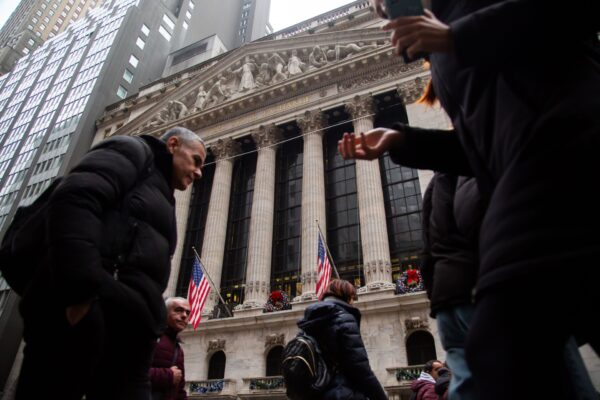By Liz Capo McCormick and Anna Wong (Economist)
Markets have been trading as if the end of the world is at hand – but what most participants see, behind the recent financial turmoil and contagion fears, is a still-strong US economy, the MLIV Pulse survey shows.

The collapse of three US banks and the scramble to rescue others, including Europe’s Credit Suisse Group AG and First Republic Bank, sent stocks and bond yields plunging. Bets on Federal Reserve monetary tightening got dialed back, swap contracts reflect expectations for rate cuts within months, and recession warnings are ramping up.
Yet the world foreseen in those trades is hard to square with the one outlined by 519 investors, retail and professional, who took part the MLIV survey between March 13-17. Most respondents believe that a hard landing will be averted, with about two thirds predicting that the economy is either heading toward a soft landing, accelerating or cruising.
The survey was conducted after Silicon Valley Bank collapsed, but before a weekend rescue of Credit Suisse, which wiped out holders of the bank’s riskiest bonds, raising concerns about a credit crunch.
Most lean toward a scenario in which the Fed ekes out some more rate hikes, even though history suggests that if recession risks do materialize, central banks can rapidly pivot to monetary easing.
The survey findings suggest a mismatch between what investors see as the likely economic outcomes, and the direction that trades have taken — driven by market momentum and concern that banking troubles could snowball.
The European Central Bank, which went ahead as planned with a half-point increase in interest rates on Thursday, suggested inflation-fighting hasn’t moved to the back burner for central banks – even though the ECB avoided signaling what comes next.
This week it’s the Fed’s turn. The US central bank still enjoys investor confidence, according to the MLIV survey. More than 60% of retail and professional investors alike said it hasn’t lost credibility.
Investors see the March 22 decision as being between a pause – on financial stability concerns — and a quarter-point hike to continue the inflation-busting campaign.
One key question is how much of the Fed’s desired financial tightening will now happen as a result of banks turning cautious. Credit spreads are an important channel through which market distress affects the real economy. So far, they haven’t widened to a degree that implies a significant slowdown.
Goldman Sachs Group Inc. economists estimate the likely impact from tighter lending conditions at up to 0.5% of US gross domestic product – a significant hit, but not commensurate with the degree of alarm on markets. The Goldman team continues to predict a soft landing, consistent with MLIV survey respondents.
‘Long-Run Path’
The banking turmoil has clearly had a psychological impact, as well as shifting the Fed outlook.
“The Fed is still on a long-run path of tightening policy to bring inflation down,” said Darrell Duffie, a Stanford University finance professor. “The most likely path for the Fed is that there’s a temporary pause in rates, maybe just until the next meeting after this coming one, and then the Fed would resume as dictated by data on inflation concerns.”
For the Fed, a big real-economy shock stemming from this month’s financial events is a risk, not a foregone outcome or even a likely one – while persistently high inflation is a fact, one that policymakers have battled against for a year with little progress to show so far.
So even if the US central bank chooses to pause this week, it could be a hawkish pause, one that allows markets to stabilize but increases the risk of more hikes to come.
Last Jenga Block?
Fed officials have flagged the hiring boom and rising wages as one of the main inflationary threats. A majority of MLIV respondents said the jobs market is either softening already or will do soon. Roughly one-third said that the shortage of workers means there may not be much cooling this year, and that higher rates will instead compress profit margins.
The Bloomberg Economics view is that a soft landing remains an outside bet, with a 75% chance of recession in the third quarter of this year. Fed hikes have in the past mostly ended up breaking things, and this cycle is likely no exception.
That’s broadly the signal sent by plunging yields in the past week, according to Matthew McLennan, co-head of the global value team at First Eagle Investment Management.
“The bond market is telling you that the last block has been taken out of the Jenga stack by the Fed,” he said. After all the banking stress, “lending growth will probably slow — which raises the probability that nominal growth slows. You can see how this could translate to a recession.”
MLIV Pulse is a weekly survey of readers of the Bloomberg Professional Service and website, conducted by Bloomberg’s Markets Live team, which also runs a 24/7 MLIV Blog on the terminal. To subscribe to MLIV Pulse stories, click here.
(Updates with Credit Suisse Group bonds in fourth paragraph)
More stories like this are available on bloomberg.com.




